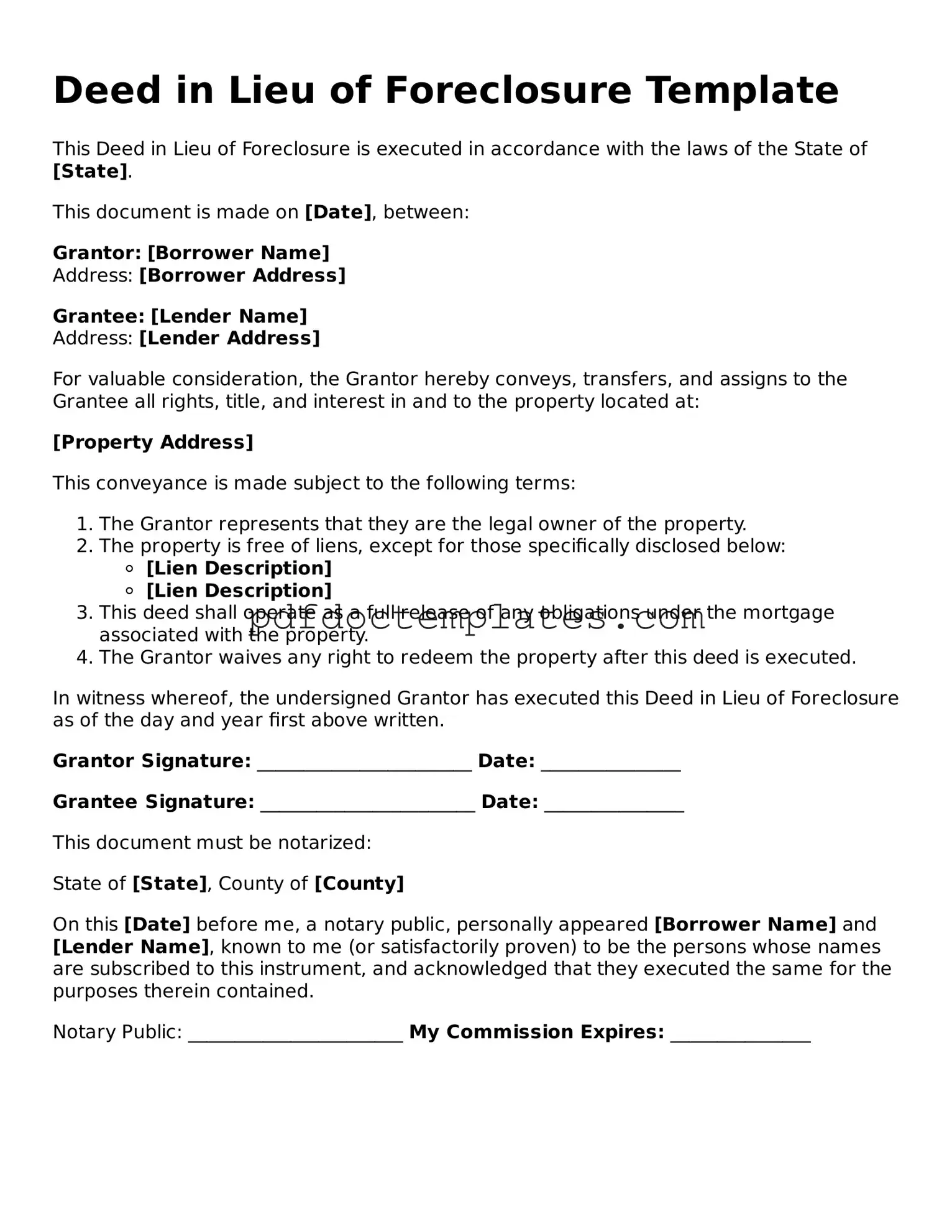Deed in Lieu of Foreclosure Template
This Deed in Lieu of Foreclosure is executed in accordance with the laws of the State of [State].
This document is made on [Date], between:
Grantor: [Borrower Name]
Address: [Borrower Address]
Grantee: [Lender Name]
Address: [Lender Address]
For valuable consideration, the Grantor hereby conveys, transfers, and assigns to the Grantee all rights, title, and interest in and to the property located at:
[Property Address]
This conveyance is made subject to the following terms:
- The Grantor represents that they are the legal owner of the property.
- The property is free of liens, except for those specifically disclosed below:
- [Lien Description]
- [Lien Description]
- This deed shall operate as a full release of any obligations under the mortgage associated with the property.
- The Grantor waives any right to redeem the property after this deed is executed.
In witness whereof, the undersigned Grantor has executed this Deed in Lieu of Foreclosure as of the day and year first above written.
Grantor Signature: _______________________ Date: _______________
Grantee Signature: _______________________ Date: _______________
This document must be notarized:
State of [State], County of [County]
On this [Date] before me, a notary public, personally appeared [Borrower Name] and [Lender Name], known to me (or satisfactorily proven) to be the persons whose names are subscribed to this instrument, and acknowledged that they executed the same for the purposes therein contained.
Notary Public: _______________________ My Commission Expires: _______________
